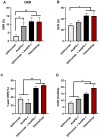Advances and Challenges in Immunotherapy for Metastatic Uveal Melanoma: Clinical Strategies and Emerging Targets
- PMID: 40725830
- PMCID: PMC12295115
- DOI: 10.3390/jcm14145137
Advances and Challenges in Immunotherapy for Metastatic Uveal Melanoma: Clinical Strategies and Emerging Targets
Abstract
Uveal melanoma (UM), the most common primary intraocular malignancy in adults, poses a unique clinical challenge due to its high propensity for liver metastasis and poor responsiveness to conventional therapies. Despite the expanding landscape of immunotherapy in oncology, progress in managing metastatic uveal melanoma (mUM) remains limited, and no universally accepted standard of care has been established. In this review, we examine the current state and evolving strategies in immunotherapy for mUM, focusing on immune checkpoint inhibitors (ICIs), T cell receptor (TCR)-engineered therapies, and tumor-targeted vaccines. We also present a meta-analytical comparison of clinical outcomes between ICI monotherapy and combination regimens, alongside the recently FDA-approved T cell engager tebentafusp. Our analysis indicates that the triple combination of Ipilimumab, anti-PD-1 agents, and tebentafusp significantly enhances objective response rates, disease control rates, 1-year overall survival rates, and median overall survival (mOS) compared to ICI monotherapy alone. However, this enhanced efficacy is accompanied by increased toxicity due to broader immune activation. In contrast, tebentafusp offers superior tumor specificity and a more favorable safety profile in HLA-A*02:01-positive patients, positioning it as a preferred therapeutic option for this genetically defined subset of UM. Additionally, early-phase studies involving dendritic cell-based immunotherapies and peptide vaccines has shown encouraging signs of tumor-specific immune activation, along with improved tolerability. Collectively, this review underscores the urgent need for more precise and effective immunotherapeutic approaches tailored to the unique biology of mUM.
Keywords: TCR-based therapy; Tebentafusp; checkpoint inhibitors; immunotherapy; metastatic uveal melanoma; vaccines.
Conflict of interest statement
The authors declare no conflicts of interest.
Figures


Similar articles
-
Systemic treatments for metastatic cutaneous melanoma.Cochrane Database Syst Rev. 2018 Feb 6;2(2):CD011123. doi: 10.1002/14651858.CD011123.pub2. Cochrane Database Syst Rev. 2018. PMID: 29405038 Free PMC article.
-
Monitoring soluble cMET and ctDNA in metastatic uveal melanoma patients to track early disease progression on immunotherapies.J Exp Clin Cancer Res. 2025 Jul 19;44(1):213. doi: 10.1186/s13046-025-03451-2. J Exp Clin Cancer Res. 2025. PMID: 40682179 Free PMC article.
-
A Brief Overview of Uveal Melanoma Treatment Methods with a Focus on the Latest Advances.J Clin Med. 2025 Jun 8;14(12):4058. doi: 10.3390/jcm14124058. J Clin Med. 2025. PMID: 40565803 Free PMC article.
-
Systemic pharmacological treatments for chronic plaque psoriasis: a network meta-analysis.Cochrane Database Syst Rev. 2017 Dec 22;12(12):CD011535. doi: 10.1002/14651858.CD011535.pub2. Cochrane Database Syst Rev. 2017. Update in: Cochrane Database Syst Rev. 2020 Jan 9;1:CD011535. doi: 10.1002/14651858.CD011535.pub3. PMID: 29271481 Free PMC article. Updated.
-
Neoadjuvant treatment for stage III and IV cutaneous melanoma.Cochrane Database Syst Rev. 2023 Jan 17;1(1):CD012974. doi: 10.1002/14651858.CD012974.pub2. Cochrane Database Syst Rev. 2023. PMID: 36648215 Free PMC article.
References
Publication types
Grants and funding
- Startup fund of the School of Pharmacy/The University of Texas at El Paso
- 1R16GM145559-22/NH/NIH HHS/United States
- University Research Institute (URI) Award (14648680),/The University of Texas at El Paso
- W81XWH-19-1-0282/DOD Peer Reviewed Cancer Research Program Idea Award
- Research Grant/The Lizanell and Colbert Coldwell Foundation
LinkOut - more resources
Full Text Sources
Research Materials

